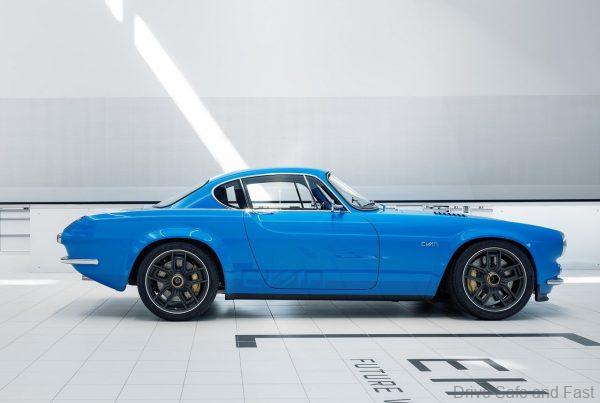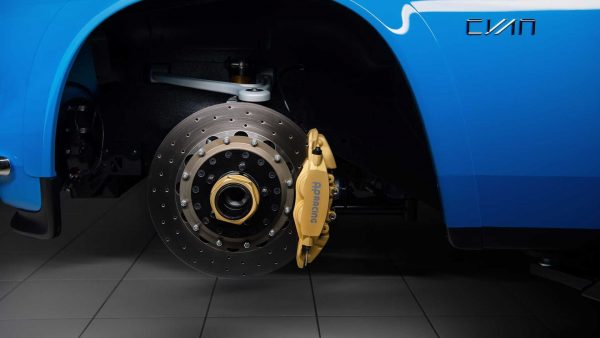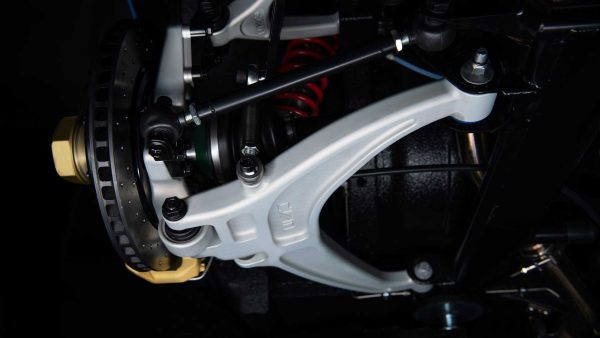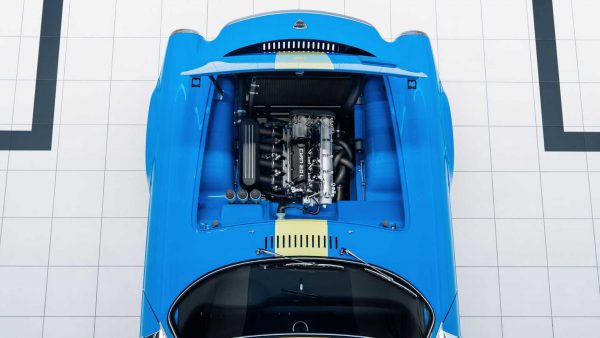Cyan Racing’s modern interpretation of the Volvo P1800 was a pleasant surprise, combining modern engineering with classic looks to create a truly beautiful sports car that would make purists around the globe rejoice.
When Cyan Racing first introduced the P1800 Cyan restomod back in September, we only got to see the exterior. Thankfully, the Swedish outfit has now revealed the car’s interior and engine bay in a series of new pictures.



The cabin retains the same design layout as that of the original P1800, except that it looks fresh, thanks to the generous use of leather and fabric upholstery, and blue-trimmed bespoke digital instruments. You’ll also find a leather clad titanium roll hoop, racing seats with racing harnesses, a Momo Prototipo steering wheel, as well as steel pedal and footrests.
The P1800 Cyan has perhaps the cleanest engine bay you’ll ever see. Sitting inside it is the S60 TC1’s 2.0-litre turbocharged four-cylinder engine tuned to produce 420 hp and 455 Nm of torque. A five-speed manual transmission made by Holinger is tasked to channel the output to the wheels via a torque-biasing LSD.
Cyan Racing has also upgraded the chassis with rack and pinion steering, aluminium uprights and two-adjustable dampers with hydraulics that were developed in-house.
The company is willing to build the P1800 Cyan for its “prospective clients” but they will have to fork out a lot of cash to own of these beauties. By “a lot”, we mean $500,000, as reported by some motoring publications.

PRESS RELEASE
The Volvo P1800 Cyan is the result of thousands of engineering and design hours, creating a car that represents Cyan Racing’s philosophy of how a sports car from the sixties merged with modern day performance should be. The car has been engineered by the same team that created Volvo’s first-ever world title winning race car.
The first images of the Volvo P1800 interior, engine bay and suspension have just been released.
The interior is, just like the exterior of the car, a delicate interpretation of the original Volvo P1800 of the sixties.
The interior features a leather clad titanium roll hoop, racing seats, racing harnesses and bespoke digital instruments with a clear link to its original design.

“We have focused on creating an interior that reflects the car décor of the sixties in a modern version. We have kept the clean and driver-oriented interior of the original car, carefully moving it forward with modern materials and technology,” said Ola Granlund, Head of Design at Cyan Racing.
The two-litre turbocharged four-cylinder engine is based on the same engine as used in the world title-winning Volvo S60 TC1 race car, producing 420 horsepower and 455Nm of torque.
The engine has been re-engineered by Cyan regarding how it delivers power and its physical appearance, keeping a clean design for a clear link with its original, in combination with a contemporary performance level.
“The engine is designed for high revs, with the torque intuitively linear to the pedal. We have learnt from racing where the drivers want perfect control of the torque, increasing precision and driving pleasure at the same time,” said Mattias Evensson, Project Manager and Head of Engineering at Cyan Racing.

“Another area of attention is the design of the engine and the engine bay. We have made an effort to highlight the light and nimble VEA Volvo engine, liberated from all elements of modern engines, with clear ties to the original Volvo P1800 of the sixties.”
The chassis is fully re-engineered by Cyan with the purpose of delivering an unfiltered driving experience reminiscent of the sixties, but with modern day performance.
“As with most cars from the past, they tend to be less rewarding to drive then we might want to remember them,” said Mattias Evensson.
“We have designed a completely new chassis for the Volvo P1800 Cyan that keeps the analogue direct unfiltered connection with the road, but with much more control and predictiveness.”

The chassis features rack and pinion steering, replacing the original Volvo P1800 steering box, bespoke lightweight aluminium uprights, double wishbones, two-way adjustable dampers with Cyan hydraulics and an independent rear suspension.
“It was of course a challenge to fuse our new technology with the constraints of the sixties base car. The end result is however a car that at a first glance is a P1800 with a wider track, but when you start driving, it delivers at a completely different level,” said Mattias Evensson.
“The suspension is fully adjustable and can be set up to whichever way the customer wants, be it a more track-focused car, or a one that will be predominantly used for enjoying your favourite canyon roads, or for just visiting your local barista.”




